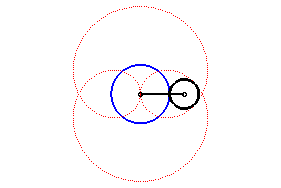Definition:
Poetry consists of an awareness of experience, expressed through meaning, sound, and rhythmic language to provoke an emotional response.
Mathematics is a science dealing with numbers, shapes, structures and change, and the relationships between these concepts.
So I wondered if a body of mathematical poetry might exist. Could it help us measure a life in more than just days lived or money accumulated?
Today I must admit that the bulk of math poetry does not. I've found plenty intended as education or entertainment, not expression of deep meaning of a person's existence. I saw memory aides - rhyming statements of how a math process works. I found plenty of problems presented to kids in a sing-song way, or limericks which pose a question to be answered or a puzzle to be solved. Here's an example:
Take five times which plus half of what,
And make the square of what you've got.
Divide by one-and-thirty square,
To get just four -- that's right, it's there.
This is not what I am looking for. After some searching, I did find tons (well, not really tons in a math sense) of serious discussion on math and how it might help us find meaning in the universe. Here's a sample:
Logic (thus math) starts with people labeling the existence of any object or phenomenon
(God, rock, flower, etc.) by a symbol we call 1, or yes, or +, or dot, or true.
The lack or absence of existence of an object is labeled as 0, or no, or -, or dash, or false.
The symbols are used to describe objects around us as either existing or absent...
That discussion went on for many pages and my eyelids closed with a flutter! Then I found this:
If poetry is the love of carefully-chosen words and crafted phrases to convey image and idea;
if a mathematician channels a love of pattern, quantity, and structure into carefully-chosen words and crafted phrases;
the intersection of their realms should be non-trivial.
Now we're talking! That statement led to this poem entitled An Equation for my children, by Wilmer Mills
It may be esoteric and perverse
That I consult Pythagoras to hear
A music tuning in the universe.
My interest in his math of star and sphere
Has triggered theorems too far-fetched to solve.
They don't add up.
But if I rack and toil
More in ether than mortal coil,
It is to comprehend how you revolve,
By formulas of orbit, ellipse, and ring.
Dear son and daughter, if I seem to range
It is to chart the numbers spiraling
Between my life and yours until the strange
And seamless beauty of equations click
Solutions for the heart's arithmetic.












































